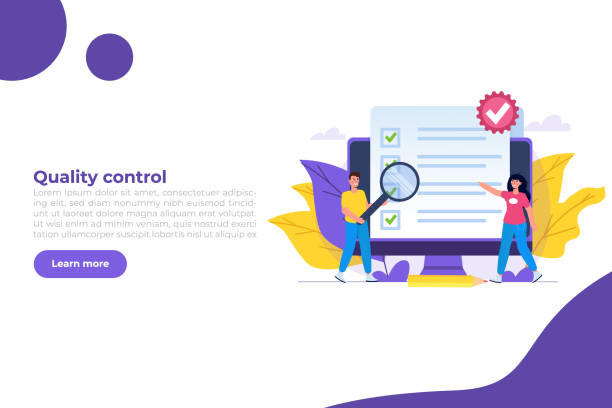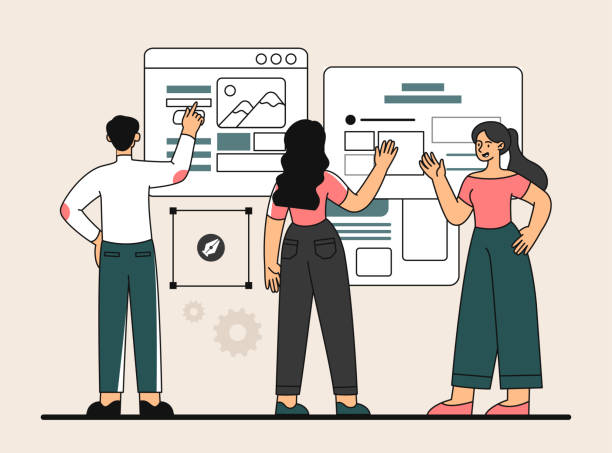Why Do You Need a Personal Website?
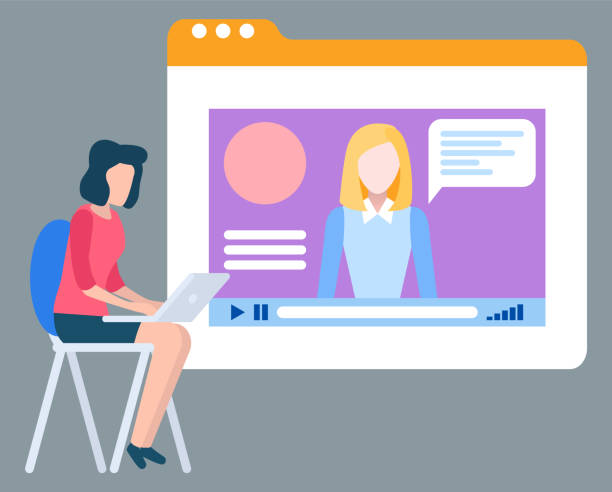
In today’s world, where physical boundaries have faded and communications have shifted to the online space more than ever, having a powerful digital presence is not just an advantage, but a necessity.
Your #PersonalWebsiteDesign is more than an online business card; it’s a platform to express your identity, showcase your skills and experiences, and create a unique personal brand.
This process is an important #educational step for entering the digital world.
A personal website allows you to have complete control over your content, unlike social platforms that have their own rules and algorithms.
By building a website, you will have an exclusive space to share your resume, portfolio, thoughts, and even a personal blog.
This is a powerful #explanatory tool for explaining your expertise to potential employers, clients, or even colleagues.
Through your personal website, you can network, find new job opportunities, and even generate income.
This platform is your permanent showcase in the virtual world and helps you stand out among competitors and maintain a professional presence.
In other words, having a personal website is an investment in your future and enables you to tell your story the way you want.
Are you losing business opportunities due to an outdated website? With Rasawwb, solve the problem of not attracting potential customers through your website forever!
✅ Attract more qualified leads
✅ Increase brand credibility in the eyes of customers
⚡ Get free consultation for corporate website design
Understanding Your Goal and Audience: The First Step in Design
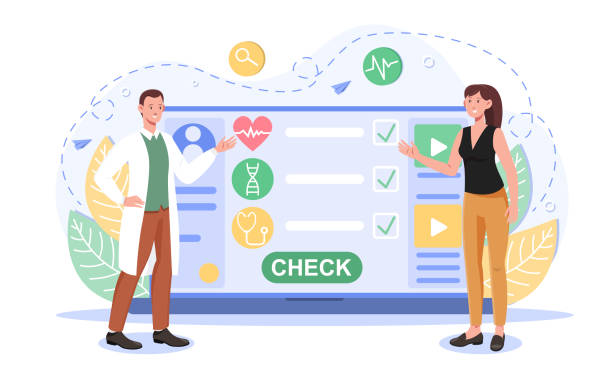
Before taking any practical steps for designing a personal website, it’s essential to clearly define your goal and identify your primary audience.
This stage, which involves a #questioning aspect for yourself, is considered the most fundamental part of planning.
Ask yourself: “Why am I building this website?” Is your goal to showcase your portfolio to potential clients, create a blog to share knowledge, or sell products and services? The answer to this question will significantly influence your design and content strategy.
Also, understanding your audience is crucial.
Who is this website for? Fellow professionals? Students? The general public? Understanding the demographics, interests, and needs of your audience will help you choose the appropriate language, visual design, and type of content.
For example, if your audience consists of IT professionals, you can use specialized terminology, but if your goal is to attract the general public, you should use simpler and more understandable language.
This #guidance phase helps you make more informed decisions about your site’s structure, navigation, and even writing tone.
The more you know about your goal and audience, the more effective and impactful your website will be, and your investment in web design will be more successful.
Choosing the Right Platform for Your Website
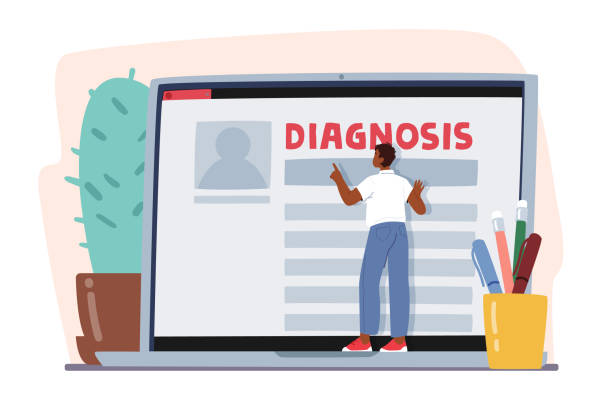
One of the most important decisions in the process of designing a personal website is choosing the right platform.
This choice not only affects your ease of work but also impacts your development capabilities and budget.
Generally, there are two main approaches: using Content Management Systems (CMS) like WordPress, Wix, or Squarespace, or coding from scratch.
Each of these options has its pros and cons that should be evaluated based on your #specific needs and technical knowledge level.
CMS platforms typically offer visual tools and pre-made templates that greatly simplify the website building process, even for those without coding knowledge.
Due to their large user base and extensive support, these platforms provide abundant #guidance resources.
On the other hand, coding from scratch offers infinite flexibility and allows you to implement any desired feature or design, but it requires deep knowledge of programming and web design.
Below is a table comparing common platforms:
| Platform | Advantages | Disadvantages | Suitable for |
|---|---|---|---|
| WordPress | High flexibility, many plugins, large user community | Initial learning curve, responsibility for security and maintenance | Bloggers, small businesses, portfolios |
| Wix | Easy to use, drag-and-drop, beautiful templates | Customization limitations, difficulty in easily transferring site | Beginner users, small businesses with simple needs |
| Squarespace | Stylish designs, built-in tools, good support | Higher price, plugin limitations | Artists, photographers, bloggers focused on aesthetics |
| Coding from Scratch | Full flexibility, high control, optimal performance | High technical knowledge required, time-consuming, high cost | Developers, custom and complex projects |
The choice of platform depends on how much time and money you are willing to invest and how much control you want over technical details.
Careful consideration of your needs will assist you in this important #explanatory choice.
Domain Name and Hosting: The ABCs of Online Presence
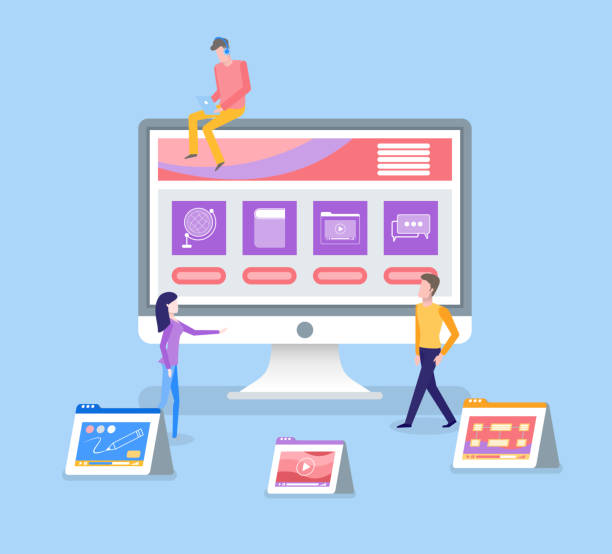
After choosing a platform for your personal website design, it’s time to select a domain name and hosting service.
The domain name is your website’s address on the internet (like example.com), and its selection is very important.
A good domain name should be short, memorable, relevant to your activity, and include keywords as much as possible.
Before registering, always ensure the desired name is available.
The domain extension is also important; common extensions like .com or .org are more widely recognized, but more specialized extensions like .me or .pro can also be suitable for a personal website.
Hosting or web hosting is the space where your website’s files and information are stored and are always accessible to users.
Choosing a reliable and high-quality hosting service is crucial for your website’s performance and speed.
There are various types of hosting, including shared hosting, VPS, and dedicated servers, each with its own advantages and disadvantages, and their selection depends on your anticipated traffic and budget.
Good hosting services offer features like free SSL certificates, 24/7 support, and regular backups, which are essential for your website’s security and stability.
This fundamental #explanatory stage forms the cornerstone of your online presence and should not be overlooked.
Choosing the right domain name and hosting are important steps towards making your website #professional.
Does your current corporate website not reflect your brand’s credibility and power as it should? Rasawwb solves this challenge for you with professional corporate website design.
✅ Increase visitor credibility and trust
✅ Attract more targeted customers
⚡ Click to get a free consultation!
Principles of User Interface (UI) and User Experience (UX) Design
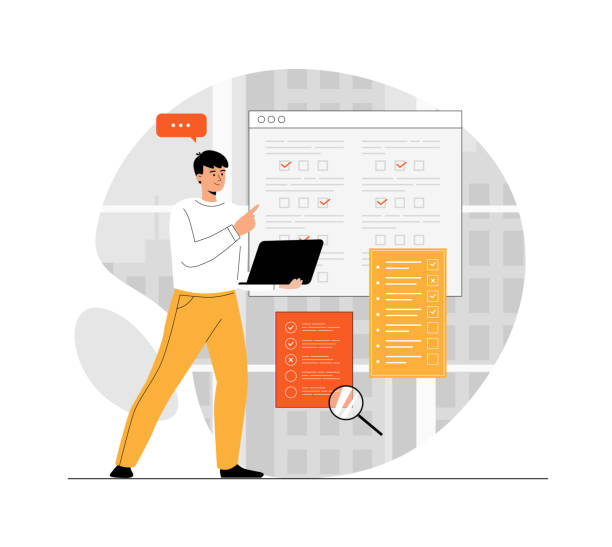
The success of a personal website does not solely depend on its content; its User Interface (UI) and User Experience (UX) design also play a crucial role.
Good design attracts the user and allows them to easily navigate the site and access the desired information.
UI principles include the selection of colors, fonts, images, and visual elements that should not only be aesthetically pleasing but also align with your brand and message.
Using a harmonious color palette and legible fonts is essential to create a pleasant experience.
On the other hand, UX refers to the overall user experience when interacting with your website.
This includes ease of navigation, page loading speed, and compatibility with various devices (responsiveness).
A website should display equally well on desktops, tablets, and mobiles so that users can easily use it on any device.
This #educational design phase requires an analytical perspective.
To improve UX, you can design simple and logical navigation, use clear Call-to-Action buttons, and ensure that important information is easily accessible.
The main goal is to create a smooth and frictionless user experience that encourages visitors to stay and explore your site further.
This #analytical stage in the personal website design process is very important and directly impacts user retention.
Creating Engaging and Authoritative Content for Your Website
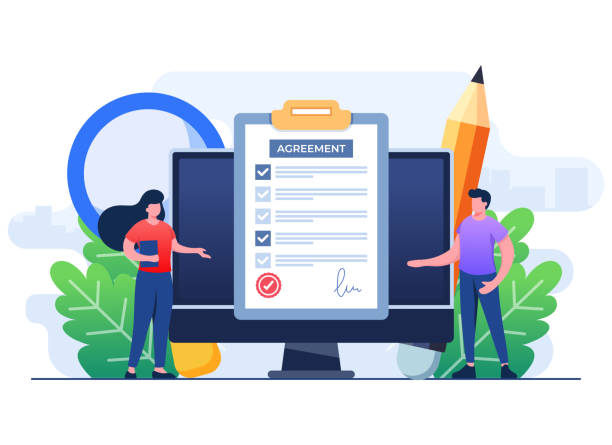
Content is the beating heart of any website, especially in personal website design, where the main goal is to present you and your expertise.
Your content should not only be informative and relevant but also engaging, unique, and entertaining to encourage visitors to stay and return.
This stage requires an #entertaining and creative approach.
Textual content includes blog articles, portfolio descriptions, your biography, and resume.
Ensure these texts are fluid, free of spelling and grammatical errors, and written in a tone consistent with your brand personality.
Using high-quality images, short introductory videos, and infographics can enhance the visual appeal of your content and present information in a more digestible format.
If your website is a portfolio, be sure to display your work with complete and engaging descriptions.
For a blog, try to choose topics that you are both interested in and that are valuable to your audience.
Regular publication of #news and fresh content not only encourages visitors to return but also sends positive signals to search engines.
Finally, the originality and credibility of content are highly important; avoid plagiarism and try to present your unique perspectives.
Producing valuable content is the foundation for the success and visibility of your personal website design in the online space.
Search Engine Optimization (SEO) for Personal Websites
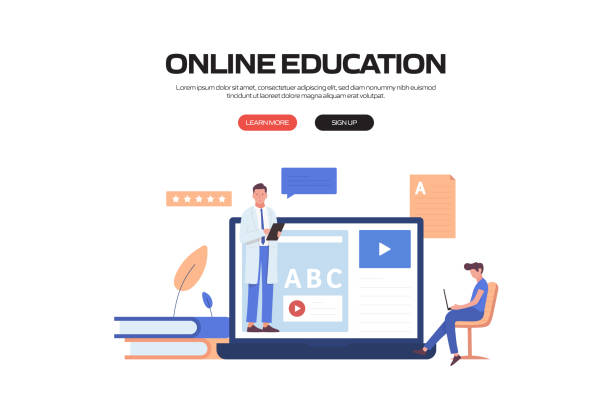
After designing your personal website and creating content, the next step is to ensure your website is found by search engines like Google.
This is where Search Engine Optimization (SEO) comes into play.
SEO is a set of techniques used to improve your website’s ranking in search results and helps you attract more organic traffic.
This is a #specialized field that requires precision and strategy.
One of the first steps is keyword research; that is, finding the words your target audience uses to search for information related to your field.
These keywords should be naturally incorporated into your content, page titles, meta descriptions, and image alt text.
Website loading speed, mobile compatibility, and the use of an SSL certificate are also important ranking factors that we discussed earlier.
Creating appropriate internal links between your website pages and striving to get links from other reputable websites (backlinks) also plays a significant role in improving SEO.
Additionally, registering your website with Google Search Console and submitting a sitemap to search engines helps them better understand and index your website.
Below is a brief checklist for personal website SEO:
| SEO Element | Description | Importance |
|---|---|---|
| Keyword Research | Identifying search queries used by users | Very High |
| Quality Content | Original and relevant text, images, and videos | Very High |
| Title and Meta Description Optimization | Using keywords in page title and description | High |
| Images with Alt Text | Describing images for search engines | Medium |
| Site Loading Speed | Faster site, better user experience, and higher ranking | Very High |
| Responsiveness (Mobile-Friendly) | Correct display on all devices | Very High |
| Internal and External Links | Connecting pages with each other and with reputable sites | High |
| SSL Certificate (HTTPS) | Website security and user trust | High |
| Registering with Google Search Console | Submitting sitemap and monitoring performance | High |
SEO is a continuous process and requires ongoing updates and follow-up.
By correctly implementing these #guidance tips, the chance of your personal website being seen in search results will significantly increase.
Website Security and Maintenance: Ensuring Stability
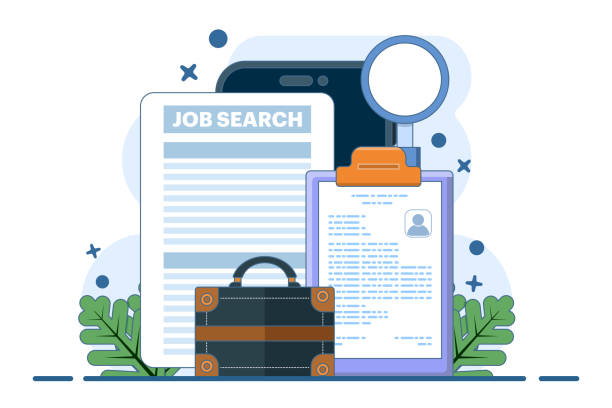
After your personal website design is complete and you’ve launched it, your work isn’t over.
Website security and maintenance are critical aspects for ensuring its long-term stability and proper functioning.
Without proper security measures, your website is at risk of cyber-attacks, data loss, and operational disruptions.
Installing an SSL certificate to encrypt communications and show “secure connection” to users is the first essential step.
Regularly updating your CMS platform, themes, and plugins is also crucial, as new versions typically include security vulnerability fixes.
Regular backups of the entire website, including files and databases, are an insurance against data loss; these backups should be stored in a secure location external to the main server.
Monitoring the website to identify suspicious activities or performance issues is also important.
You can use automatic monitoring tools that notify you if a problem arises.
Managing spam comments, clearing cache, and optimizing the database also help maintain optimal website performance.
These processes are part of #specialized website maintenance and should be performed regularly to prevent potential problems.
By observing these #explanatory tips, you can ensure that your personal website is always secure, fast, and accessible, and that your investment in it is preserved.
Research shows that 80% of customers trust companies with professional websites more. Does your current website attract this trust?
With Rasawwb’s corporate website design services, solve the problem of customer distrust and a weak online image forever!
✅ Create a professional image and increase customer trust
✅ Attract more sales leads and business growth
⚡ Get free consultation
Introducing and Marketing Your Personal Website
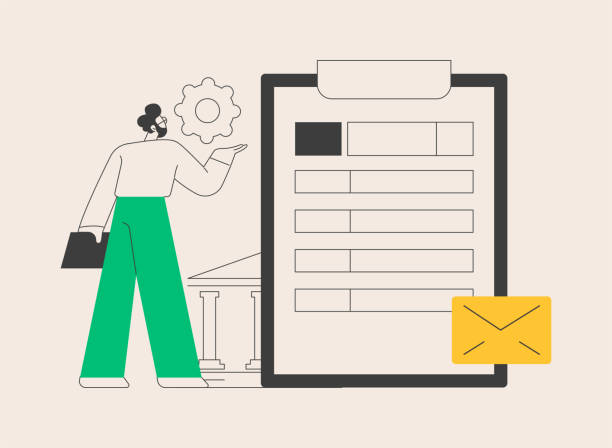
Having a great personal website alone is not enough; you need to introduce it to your target audience and conduct effective marketing for it.
The marketing process helps you attract more visitors and achieve your goals.
One of the simplest and most effective methods is sharing your website link on social media.
Update your profiles on LinkedIn, Instagram, Twitter, and other relevant platforms, and place your website link in your bio or posts.
This method is an #entertaining and easy way to start attracting traffic.
Adding your website link to your email signature is also a simple yet powerful way to promote it.
In every email correspondence, your website is automatically introduced.
Attending conferences, seminars, and industry events is an excellent opportunity for networking and introducing your website in person.
You can print business cards with your website address.
Collaborating with other bloggers or specialists in your field, through guest posting or link exchange, can help increase your website’s traffic and credibility.
Sending email newsletters to your contact list, to inform about new content or services, is also very effective.
By using a combination of these #guidance strategies and with continuous follow-up, you can ensure that your personal website is widely seen and you achieve your goals in personal website design.
Future-Proofing and Continuous Development of Your Website
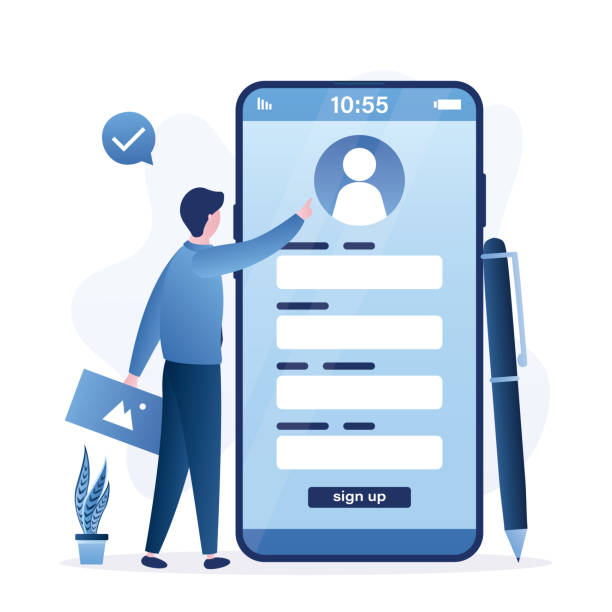
Designing a personal website is not a one-time project, but a continuous and evolutionary process.
The online world is constantly changing, and to maintain the relevance and effectiveness of your website, you must continuously update and develop it.
This requires an #analytical approach and readiness to respond to #challenging user content.
Analyzing website statistics through tools like Google Analytics helps you understand visitor behavior: which pages are most visited, where users come from, and how long they stay on your site.
This valuable information guides you in improving your content and site design.
Listening to user feedback, through contact forms, comments, or even social media, allows you to understand their needs and expectations and implement necessary changes.
Keeping content up-to-date, adding new sections, and ensuring the accuracy of provided information are vital for maintaining the freshness and credibility of your website.
Also, you should keep pace with new trends in web design and web technologies; for example, if new technologies emerge for faster speed or better user experience, consider them.
The more dynamic and up-to-date your website is, the better it can help you achieve your goals and strengthen your online presence.
This path of continuous development ensures the success and longevity of your personal website design over time.
Frequently Asked Questions
| No. | Question | Answer |
|---|---|---|
| 1 | Why should we have a personal website? | A personal website allows you to professionally showcase your resume, portfolio, experiences, and views, and strengthen your personal brand. This helps increase career and networking opportunities. |
| 2 | What content should be included in a personal website? | It usually includes sections like “About Me,” “Resume” (skills and experiences), “Portfolio” (projects and achievements), “Blog” (articles and insights), and “Contact Me.” The content should align with your website’s purpose. |
| 3 | What is the best platform for building a personal website? | WordPress is a very popular option due to its high flexibility, numerous templates and plugins, and large user community. Platforms like Wix and Squarespace are also suitable for beginners. |
| 4 | What points should be considered in personal website design? | Responsive design (for correct display on mobile and tablet), high loading speed, simple and attractive User Interface (UI) and User Experience (UX), and Search Engine Optimization (SEO) are key points. |
| 5 | How do we choose a suitable domain name for a personal website? | It is best for the domain name to be simple, short, memorable, and related to your name or personal brand. Using common extensions like .com, .net, or .ir is recommended. |
| 6 | What is the importance of the Portfolio section on a personal website? | The portfolio section is the most powerful tool to showcase your skills and completed projects. This section helps potential employers or clients tangibly see your abilities and have greater trust in you. |
| 7 | Is adding a blog section to a personal website useful? | Yes, a blog allows you to share your expertise through articles and writings, interact with your audience, and improve your site’s ranking in search engines by producing fresh content. |
| 8 | How can a personal website be made to look professional? | Using a clean and modern design, a high-quality and professional profile picture, writing content without spelling or grammatical errors, and ensuring all links and forms function correctly significantly contribute to the website’s professionalism. |
| 9 | What does personal website maintenance and updates include? | Regular content updates, checking link and form functionality, regular backups of data, and updating the Content Management System (like WordPress) and plugins are essential for maintaining security and proper functioning. |
| 10 | How much does it cost to design and maintain a personal website? | The cost can vary. It includes domain purchase (about $15-50 per year) and hosting (about $50-200 per year). Using free templates or paying for premium templates and plugins also affects the overall cost. |
And other advertising services from Rasaweb Advertising Agency
Smart Data Analysis: A dedicated service for growth and increasing click-through rates based on marketing automation.
Smart Advertising Campaign: A fast and efficient solution for digital branding focusing on attractive UI design.
Smart Brand Identity: Designed for businesses seeking online growth through the use of real data.
Smart Brand Identity: A fast and efficient solution for increasing sales with a focus on Google Ads management.
Smart Social Media: A novel service for increasing sales through custom programming.
And over a hundred other services in internet advertising, advertising consultation, and organizational solutions
Internet Advertising | Advertising Strategy | Advertorial
Sources
Guide to Building a Personal Website
10 Key Tips for Portfolio Website Design
Comparison of Best Personal Website Builders
Why Every Freelancer Needs a Personal Website?
? To elevate your business in the digital world, Rasaweb Afarin, with its comprehensive and specialized services including custom website design, SEO, and content marketing, paves your path to growth. Experience a powerful and targeted online presence with us.
📍 Tehran, Mirdamad Street, next to Bank Markazi, Southern Kazeroon Alley, Ramin Alley, No. 6

